Posted on December 5th, 2010 by ASEE
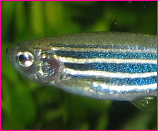 High School biology students in Valders, Wis. are raising zebra fish as part of a research project being conducted by students at the University of Wisconsin-Manitowoc. Or at least they’re trying. But the grant-funded project, intended to interest high schoolers in STEM, has encountered a problem: dying fish.
High School biology students in Valders, Wis. are raising zebra fish as part of a research project being conducted by students at the University of Wisconsin-Manitowoc. Or at least they’re trying. But the grant-funded project, intended to interest high schoolers in STEM, has encountered a problem: dying fish.
Read More
Filed under: K-12 Education News | Comments Off on Research Collaborators Encounter Mystery
Tags: Biology, Biomedical, Bioscience, Chemical Engineering, Chemistry, Experiments
Posted on November 21st, 2010 by ASEE
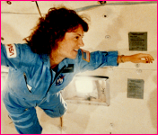 NASA’s “Kids in Micro-g” challenge calls for students in grades five through eight to design a classroom experiment that can also be performed by astronauts aboard the International Space Station. The “Kids in Micro-g” challenge calls for the experiments to examine the effect of weightlessness on various subjects.
NASA’s “Kids in Micro-g” challenge calls for students in grades five through eight to design a classroom experiment that can also be performed by astronauts aboard the International Space Station. The “Kids in Micro-g” challenge calls for the experiments to examine the effect of weightlessness on various subjects.
Read More
Filed under: K-12 Education News | Comments Off on NASA Weightlessness Challenge, Grades 5-8
Tags: Experiments, NASA, Outreach, Outreach for Schools, Programs for Students
Posted on November 20th, 2010 by ASEE
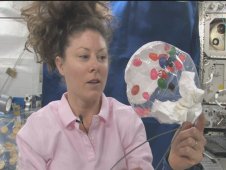 NASA’s “Kids in Micro-g” student experiment design challenge for grades 5-8, is aimed at giving students a hands-on opportunity to design an experiment or simple demonstration that could be performed both in the classroom and by astronauts aboard the International Space Station.
NASA’s “Kids in Micro-g” student experiment design challenge for grades 5-8, is aimed at giving students a hands-on opportunity to design an experiment or simple demonstration that could be performed both in the classroom and by astronauts aboard the International Space Station.
Read More
Filed under: K-12 Outreach Programs | 1 Comment »
Tags: Aerospace, Competitions for Students, Experiments, International Space Station, NASA
Posted on November 15th, 2010 by ASEE
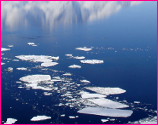 An Arlington, Va. physics teacher is heading to the South Pole as part of a University of Wisconsin experiment called IceCube, hailed as the biggest research project ever conducted on Antarctica. Among the subjects studied are cosmic rays and tiny, elusive particles known as neutrinos.
An Arlington, Va. physics teacher is heading to the South Pole as part of a University of Wisconsin experiment called IceCube, hailed as the biggest research project ever conducted on Antarctica. Among the subjects studied are cosmic rays and tiny, elusive particles known as neutrinos.
Read More
Filed under: K-12 Education News | Comments Off on Field Trip to the South Pole
Tags: Experiments, Physics, Programs for Teachers
Posted on June 21st, 2010 by ASEE
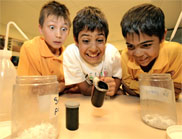 Visit the chemistry activity page from CSIRO — The Commonwealth Scientific and Industrial Research Organisation, Australia’s national science agency — to find simple, fun chemistry and physics projects for students. Other sections of this science Website offer information, videos, links, the Double Helix Science Club, and local resources for Australia teachers.
Visit the chemistry activity page from CSIRO — The Commonwealth Scientific and Industrial Research Organisation, Australia’s national science agency — to find simple, fun chemistry and physics projects for students. Other sections of this science Website offer information, videos, links, the Double Helix Science Club, and local resources for Australia teachers.
Read More
Filed under: Class Activities, Grades 6-8, Grades 9-12, Grades K-5, K-12 Outreach Programs, Web Resources | Comments Off on Class Activities: Chemistry and Physics from CSIRO
Tags: Chemistry, Experiments, Physics
 High School biology students in Valders, Wis. are raising zebra fish as part of a research project being conducted by students at the University of Wisconsin-Manitowoc. Or at least they’re trying. But the grant-funded project, intended to interest high schoolers in STEM, has encountered a problem: dying fish.
High School biology students in Valders, Wis. are raising zebra fish as part of a research project being conducted by students at the University of Wisconsin-Manitowoc. Or at least they’re trying. But the grant-funded project, intended to interest high schoolers in STEM, has encountered a problem: dying fish. 








 NASA’s “Kids in Micro-g” challenge calls for students in grades five through eight to design a classroom experiment that can also be performed by astronauts aboard the International Space Station. The “Kids in Micro-g” challenge calls for the experiments to examine the effect of weightlessness on various subjects.
NASA’s “Kids in Micro-g” challenge calls for students in grades five through eight to design a classroom experiment that can also be performed by astronauts aboard the International Space Station. The “Kids in Micro-g” challenge calls for the experiments to examine the effect of weightlessness on various subjects. NASA’s “Kids in Micro-g” student experiment design challenge for grades 5-8, is aimed at giving students a hands-on opportunity to design an experiment or simple demonstration that could be performed both in the classroom and by astronauts aboard the International Space Station.
NASA’s “Kids in Micro-g” student experiment design challenge for grades 5-8, is aimed at giving students a hands-on opportunity to design an experiment or simple demonstration that could be performed both in the classroom and by astronauts aboard the International Space Station. An Arlington, Va. physics teacher is heading to the South Pole as part of a University of Wisconsin experiment called IceCube, hailed as the biggest research project ever conducted on Antarctica. Among the subjects studied are cosmic rays and tiny, elusive particles known as neutrinos.
An Arlington, Va. physics teacher is heading to the South Pole as part of a University of Wisconsin experiment called IceCube, hailed as the biggest research project ever conducted on Antarctica. Among the subjects studied are cosmic rays and tiny, elusive particles known as neutrinos. Visit the chemistry activity page from CSIRO — The Commonwealth Scientific and Industrial Research Organisation, Australia’s national science agency — to find simple, fun chemistry and physics projects for students. Other sections of this science Website offer information, videos, links, the Double Helix Science Club, and local resources for Australia teachers.
Visit the chemistry activity page from CSIRO — The Commonwealth Scientific and Industrial Research Organisation, Australia’s national science agency — to find simple, fun chemistry and physics projects for students. Other sections of this science Website offer information, videos, links, the Double Helix Science Club, and local resources for Australia teachers.